The history of Austurland is diverse and there are many interesting, historic places in Austurland. Below are examples of places we recommend exploring if you are interested in the history of Austurland.
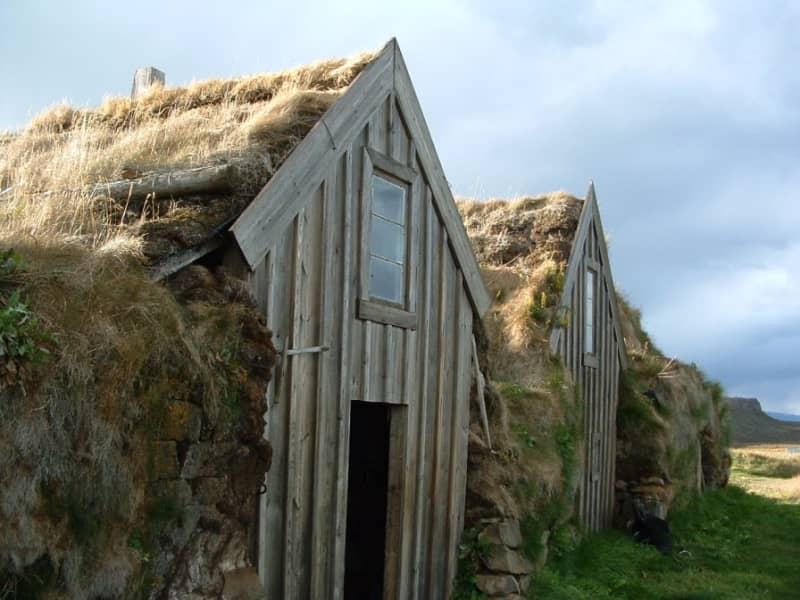
Galtastaðir Fram Turf house
The old farm of Galtastaðir Fram is a well-preserved turf house from the 19th century. Inhabited until 1967 the building exemplifies the sort of housing common in Iceland in previous centuries, heated to some extent by keeping cows under the communal living room or "baðstofa", which was also used for sleeping and handcraft.
Both the interior and exterior of this small but remarkable showcase of former living conditions can be visited by the consent of the proprietor. Galtastaðir Fram has ranked on the preservation list of the National Museum since 1976.
View
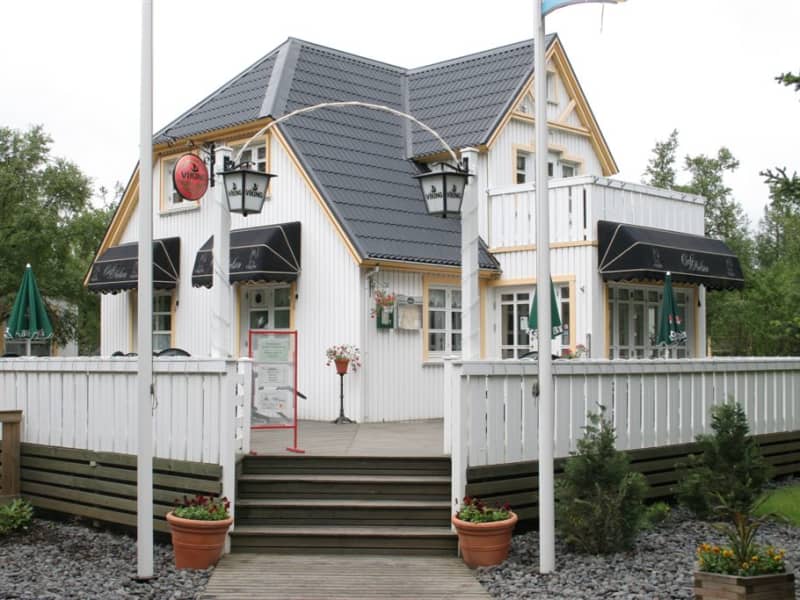
Nielsenshus
The Nielsen House was the first private house built in the village of Egilsstaðir , built in the year 1944 by the danish Oswald Nielsen. Today it houses a nice a restaurant, Café Nielsen.
View
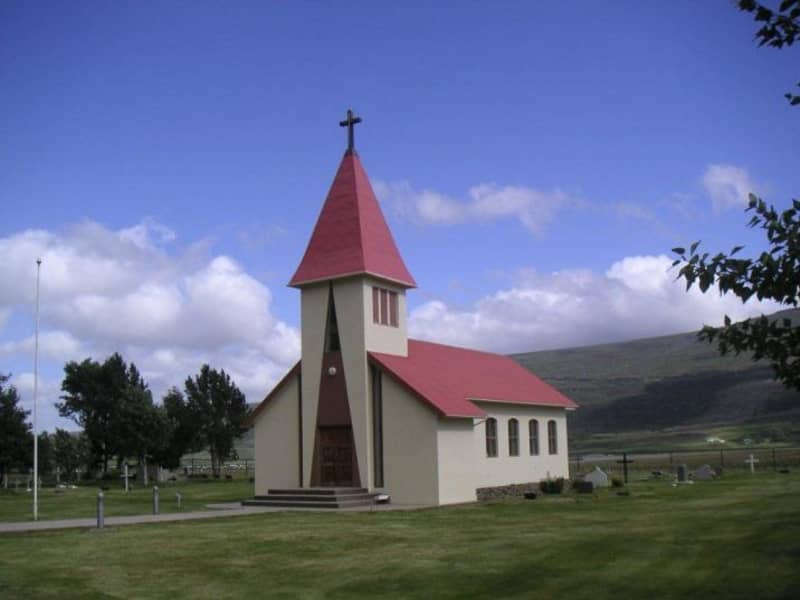
Valþjófsstaður
Valþjófsstaður is an estate deep in Fljótsdalur. It is an ancient manor, and there has been a church since the thirteenth century. Valþjófsstaður was one of the mainstays of Svínfellingar, but several members of that family were prominent in the conflicts of Sturlungaaldur.
The church that now stands in Valþjófsstaður was sanctified in 1966. The door in the inner doorway of the church is a replica of the famous Valþjófsstaður door that Halldór Sigurðsson in Miðhús carved out in the 13th century. The old door was initially used in a manor but was later used as an interior door in an old church that stood in Valþjófsstaður for many centuries. The original door is now in the custody of the National Museum of Iceland.
View
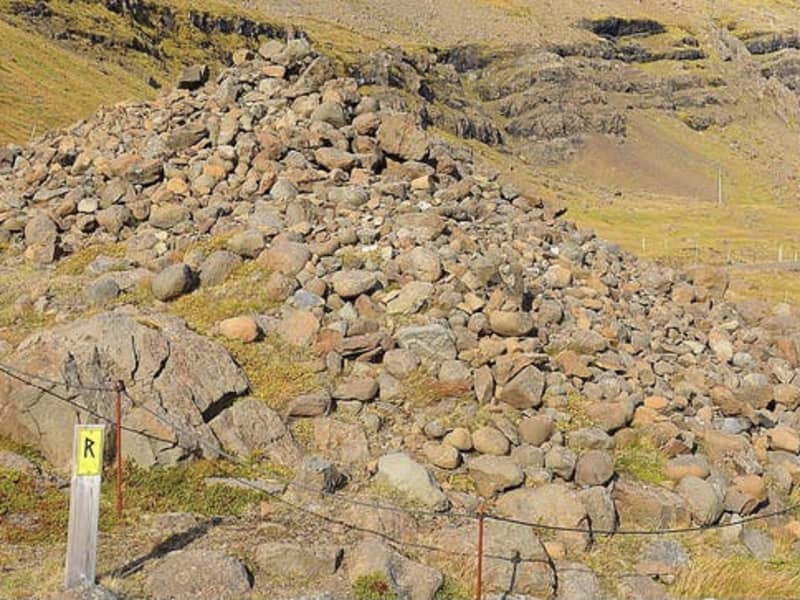
Djáknadys
According to legend the mound marks the spot where the pastor of Háls and the deacon of Hamar fought to the death. Both were buried at the site, and that is the origin of the name Djáknadys (Deacon’s Burial Mound). Tradition requires every traveller, on first passing by Djáknadys, must throw a pebble or stone onto the mound: one for him/herself, and one for every horse or dog accompanying them. If they fail to do so they will lose their way. Another version of the tradition is that travellers must place three stones on the mound. An old verse on the subject says:
To quickly dismount
and fling a stone
over the aged deacon
brings good fortune along the road.
Please treat this protected heritage site with respect and care. Do not remove stones from the mound and do not dispose of refuse under stones.
View

Eiðar
Eiðar (approx. 15 km drive from Egilsstaðir) is a church site with longstanding and important cultural and educational background. One of the first agricultural schools in Iceland was founded in Eiðar in 1883 which later converted into a general educational center for Austurland. Its function as a school was discontinued in 1995 and since then many ideas have been launched as to its future role. Tourism and services to travellers has grown in recent years with a guesthouse, camping site and recreational area. A great location for travellers who want to stay in a peaceful and picturesque area on the banks of beautiful Lake Lagarfljót in the center of Austurland.
View

Heydalir (Eydalir)
There has been a vicarage at Heydalir since early Christianity in Iceland and several renowned vicars have served there through the ages. Among them was the vicar and hymn poet Einar Sigurðsson (17th century) whose poetry is still venerated among the nation. A pillar stone has been erected in his memory at Heydalir.
The church that now stands in Heydalir was hallowed July 13th in 1975 and the old church was unchurched that same day. The old church was built in 1856 but it burned to the ground on June 17th, 1982.
The name of the place is somewhat erratic; some people talk say Haydalir and Heydalir is mentioned in some of Iceland’s old Sagas. Others talk about Eydalir, especially older locals, and the vicar Einar Sigurðsson is associated with Eydalir. In the church´s record book, which has been in use since 1909, both names are used equally. Today the official name of this place is Heydalir.
View
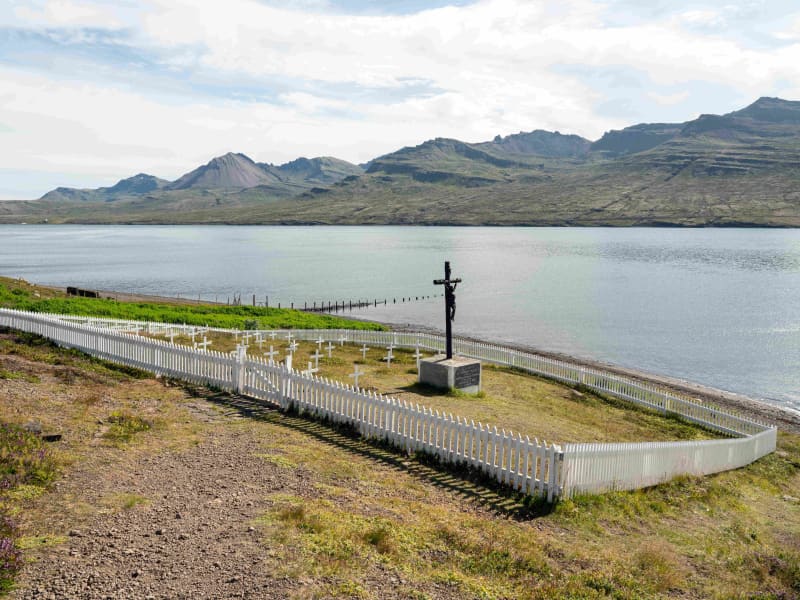
The French Graveyard - le cimetiere francais
Just outside the Fáskrúðsfjörður town is a monument with the names of 49 French and Belgian sailors who died in Iceland. In 2009, representatives from the Association of Fishermen of Gravelines arrived at the French Days town festival and delivered new crosses for the graves of the French fishermen.
Gravelines is an old fishing town on the north coast of France and the sister town of Fáskrúðsfjörður. During the French Days town festival, two wreaths of flowers are laid at the monument in the French graveyard in memory of the Icelandic and French sailors who have died at sea.
View
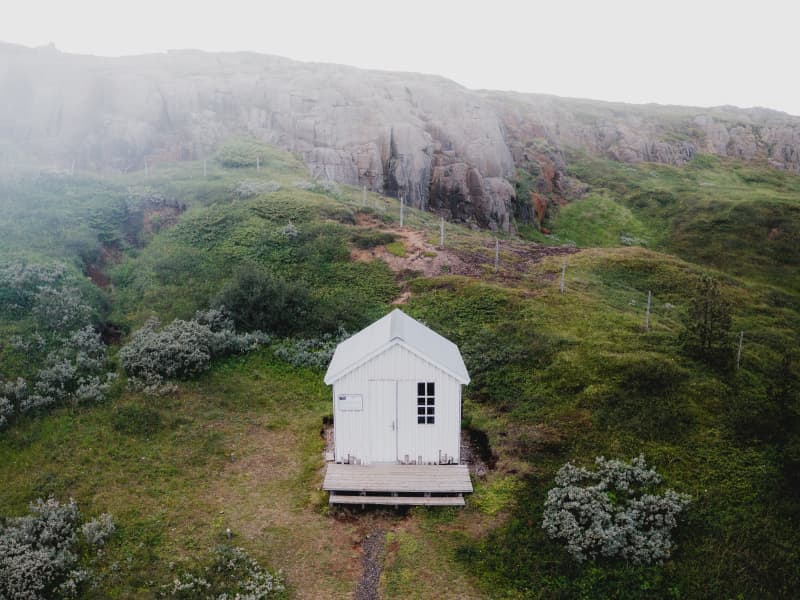
Kjarvalshvammur
A peaceful little haven, located at road 94 beside the Selfljót river south of Ketilsstaðir farm on the way out Héraðsflói. Here still stands a small cabin and a boathouse both of which belonged to Iceland´s master painter Jóhannes S. Kjarval (1889 -1972). When this master painter had spent two summers here a tent, just before 1950, the farmer at Ketilsstaðir presented him the piece of land in question and built the cabin which still stands.
This was the only real estate Kjarval ever owned. He often stayed here for extended periods, producing some of his most famous paintings. The boathouse still shelters Kjarval´s little dinghy on which he descended the river out to sea, sailing as far as the village of Borgarfjörður Eystri 1957.
View
